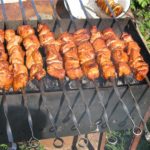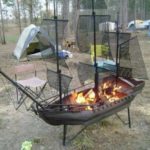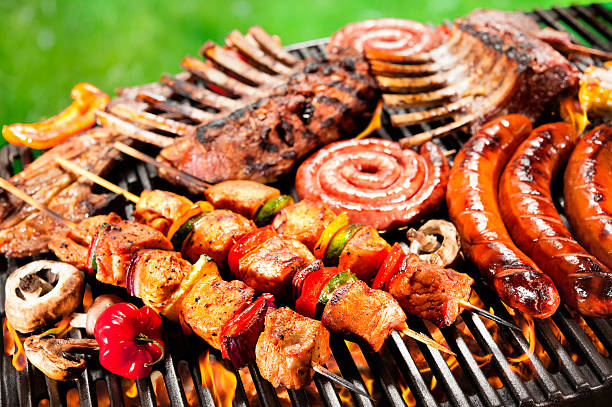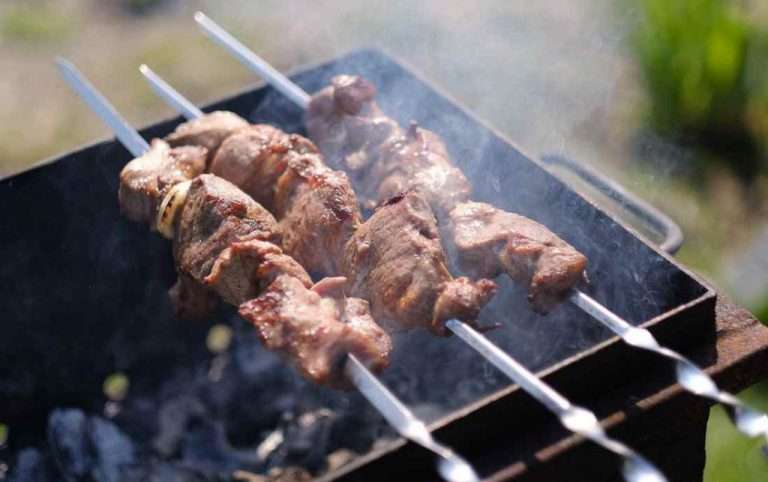How to choose a grill
A holiday in the country or in nature is rarely complete without barbecue. To cook them, you need a grill. The most common type of roaster is a rectangular metal box. But there are other options for barbecues. For their manufacture, various materials can be used, which affect the characteristics.
Only after learning all the nuances of the design of each of them can you choose the most suitable option.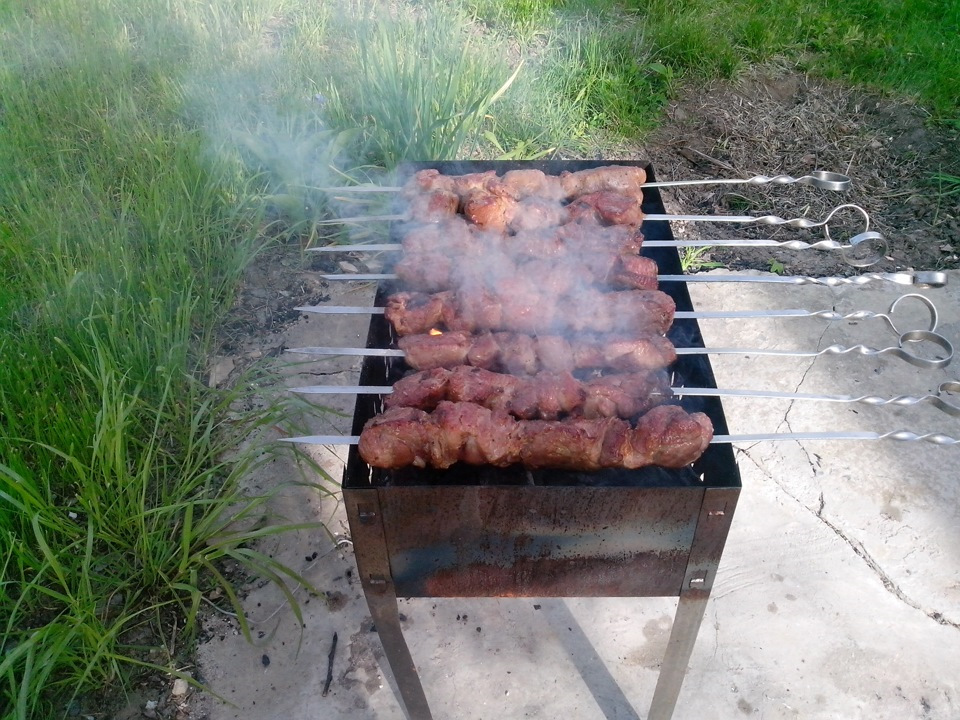
The content of the article
Choosing a barbecue based on material of manufacture
The material affects not only the cost of the product, but also ease of use, service life, and safety.
Cast iron
This is not the most common material for barbecue. Cast iron barbecues are a cast structure. They are often decorated with forging. The material has the following advantages:
- quickly heats up to the desired temperature;
- retains heat well - this has a beneficial effect on roasting meat;
- has an aesthetic appearance;
- lasts a long time - a cast iron roasting pan can last more than a hundred years;
- It is resistant to rust and cannot burn out.
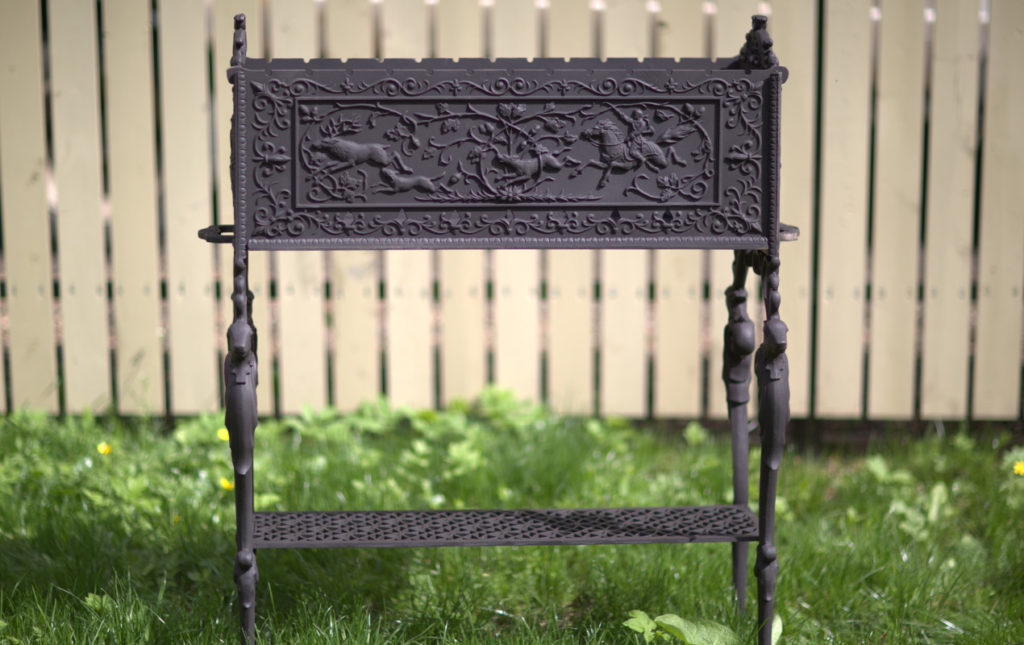
Cast iron has disadvantages:
- Heavy weight. A cast iron grill is not mobile.
- Expensive. The price of such products is quite impressive.
Steel
A brazier made of stainless steel sheets is the most common option. A large number of different models of fryers are made from steel.
The advantages are:
- low price;
- long service life;
- light weight.
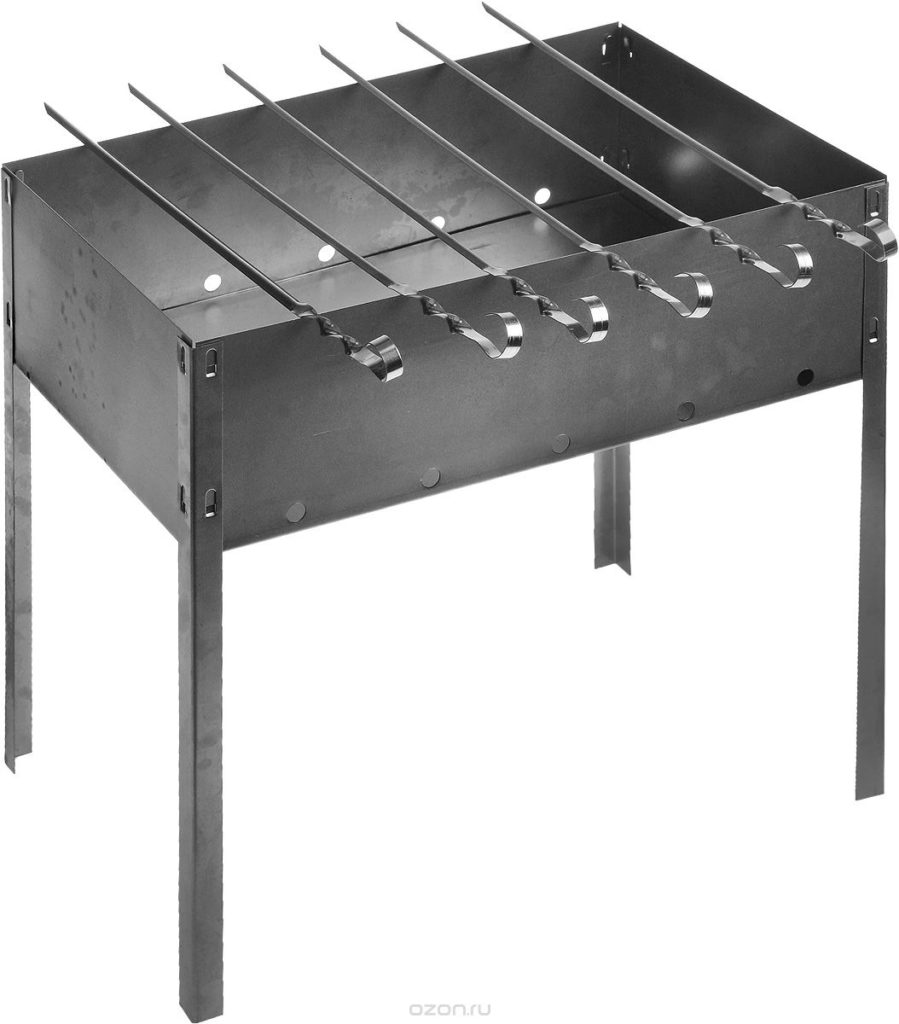
This option has more disadvantages:
- such fryers are small in size, which makes the quality of operation low;
- the walls of the product are thin, so the fryer is easily deformed from high temperature and mechanical stress;
- steel barbecues do not retain heat well;
- short service life;
- not very attractive appearance.
Collapsible models are especially popular. They are light and compact, so they are convenient to take with you on a trip or use as an additional fryer. But they are made of thin sheets of steel, so they have a short service life.
Stone and brick
Brick grills are large and beautiful. Their manufacture requires a foundation, so such roasters can only be stationary. Often the product is multifunctional - it can additionally be used as a smokehouse or oven.
To make such a barbecue, heat-resistant bricks are used. To speed up the cooking time of the kebab, you need to put a thick sheet of metal on the bottom of the structure. In addition, the grill has a chimney and a canopy, which allows you to cook on it throughout the year.
The undeniable advantages of a stone brazier:
- Long service life. The brick is not susceptible to corrosion and does not crack when heated.
- Ability to retain heat for a long time. This allows you to cook meat or other product efficiently using a minimum of flammable materials.
- Aesthetic appearance.
- Possibility of giving any shape.If necessary, the roasting pan can be decorated using various materials.
The disadvantages of a brick grill are:
- high manufacturing cost;
- the need to find an appropriate location;
- the need for the manufacture of a canopy and foundation.
Other criteria for choosing a barbecue
In addition to the material, there are other parameters to consider when choosing a Dutch oven.
Metal sheet thickness
This parameter directly affects the service life of the fryer. Therefore, it is worth purchasing a grill with thicker walls.
Reference! A longer service life can be ensured by roasters with a wall thickness of at least 3 mm.
Length and width of the roasting pan
The width of the product will depend on the length of the skewers used. The standard size is 40 cm. But before buying a frying pan, it is advisable to measure the skewers.
The capacity of the product depends on the length. On average, one skewer with meat takes up about 8 cm. Therefore, for eight kebabs you will need a roasting pan 65–70 cm long.
There are models of barbecues with ready-made slots for skewers. They let you know how much the fryer is designed for.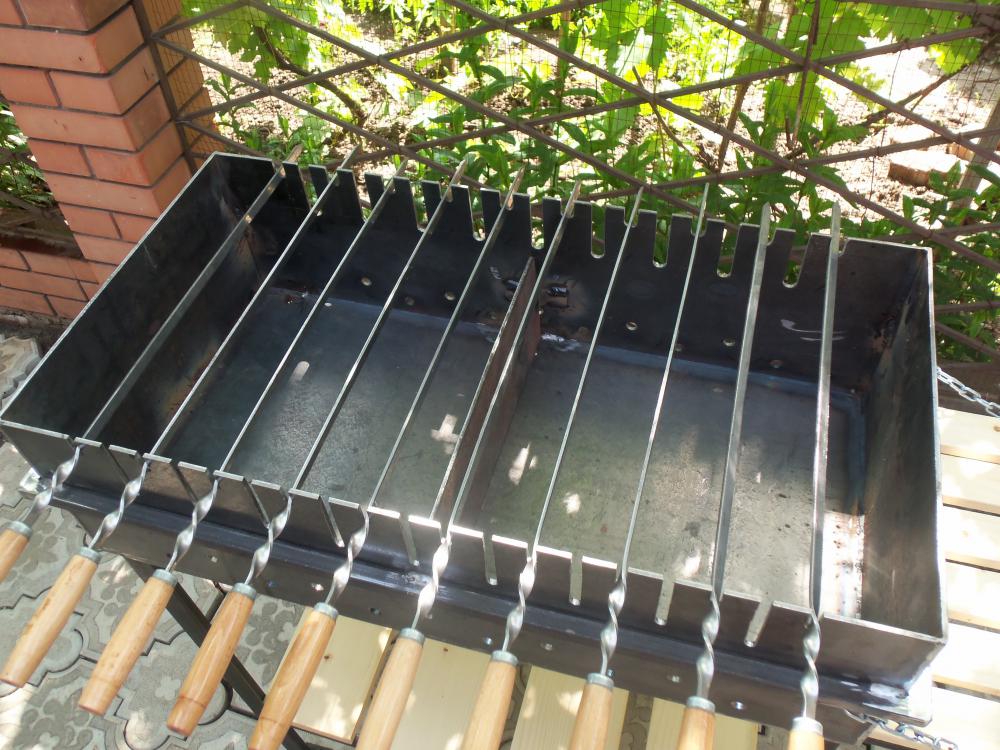
Attention! When choosing a stationary barbecue model, it is advisable to purchase a product of maximum length.
Depth
The amount of coal needed to cook meat depends on this parameter. It also affects the taste of the finished dish.
The optimal depth is 20 cm. It provides the required distance between the skewer and the coals. The result is juicy and fried meat with a beautiful, even crust.
If the depth is insufficient, the meat will char on the outside while remaining raw on the inside.
If the roasting pan is too deep, you will need a lot of charcoal to cook the meat.
Attention! It is worth considering the fuel that you plan to use. So, for firewood you will need a deeper roaster.
Ventilation holes
Ventilation holes are usually located at the bottom of the grill, under the slots for skewers. In rare cases, they are placed at the bottom of the grill - this way the coal burns hotter. But there is a disadvantage of this placement: the coal may burn unevenly - in this case, the meat will fry unevenly.
On some models, the holes are located at the top, but they are a decorative element and do not affect the quality of the kebabs.
Attention! In order for the finished dish to be fried, with an even golden brown crust, professionals advise using a fan, forgetting about barbecues with ventilation holes. Using a fan provides better control over the temperature of the coals.
Bottom
Some grills have a double bottom. It is necessary to create an air cushion that ensures uniform heat distribution. There are models with dampers that allow you to regulate the combustion temperature of the coals.
But such a fryer has disadvantages: heavy weight, high cost.
Lid
A lid is not required for cooking barbecue. But in some situations it can be useful:
- protects from precipitation;
- will help stop the cooking process for a while - this will save fuel;
- A roasting pan with a lid can be used as a smoker.

Shelf
Some models are equipped with shelves. This makes the cooking process more convenient - the food does not need to be kept suspended.
When choosing a grill, you should consider how often and where it will be used. So, for regular use, the best option would be a cast iron roasting pan, and for trips to nature, a lightweight collapsible grill.
Having decided on the necessary parameters of the future barbecue, you can easily choose the most suitable model for a summer house or private home.

